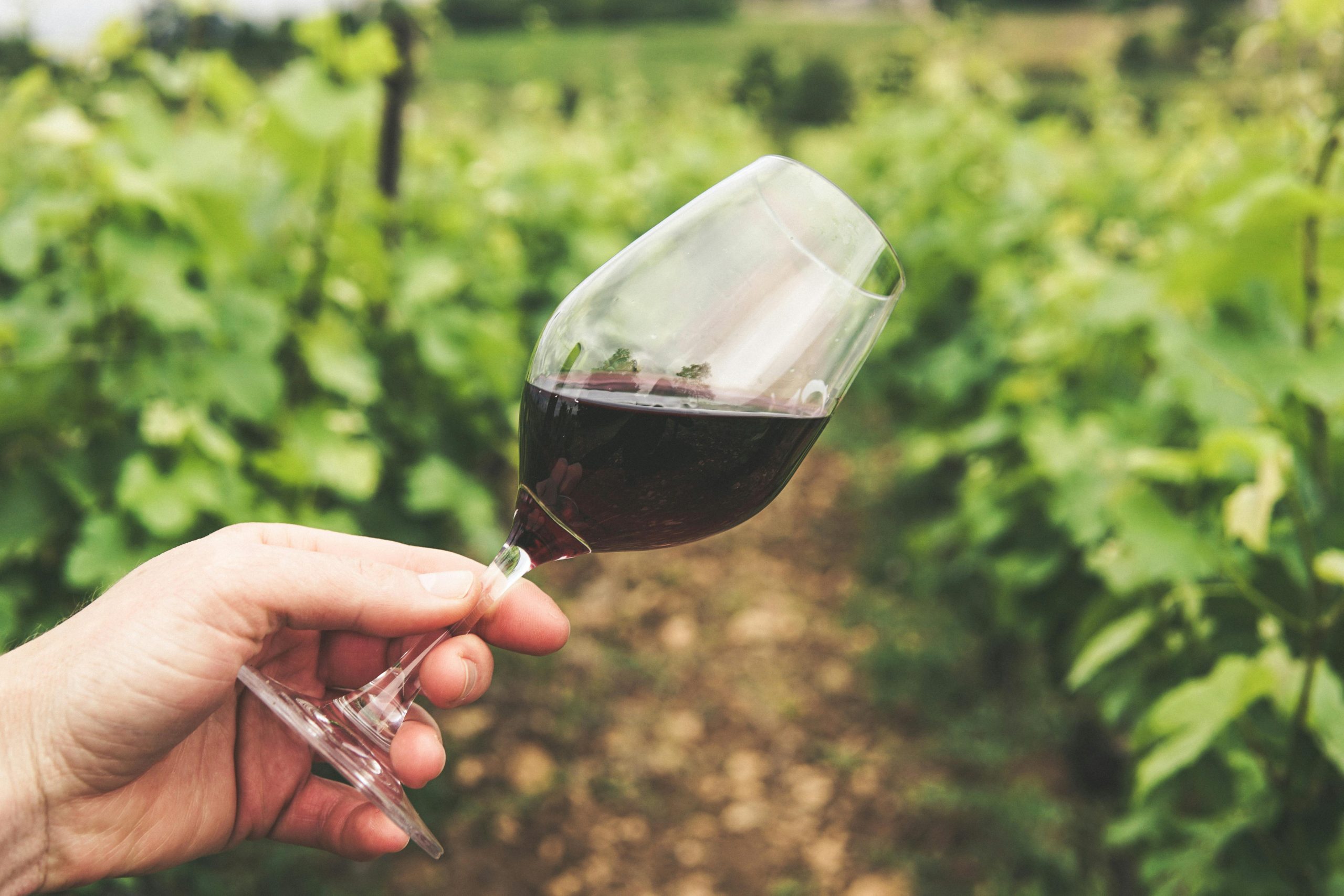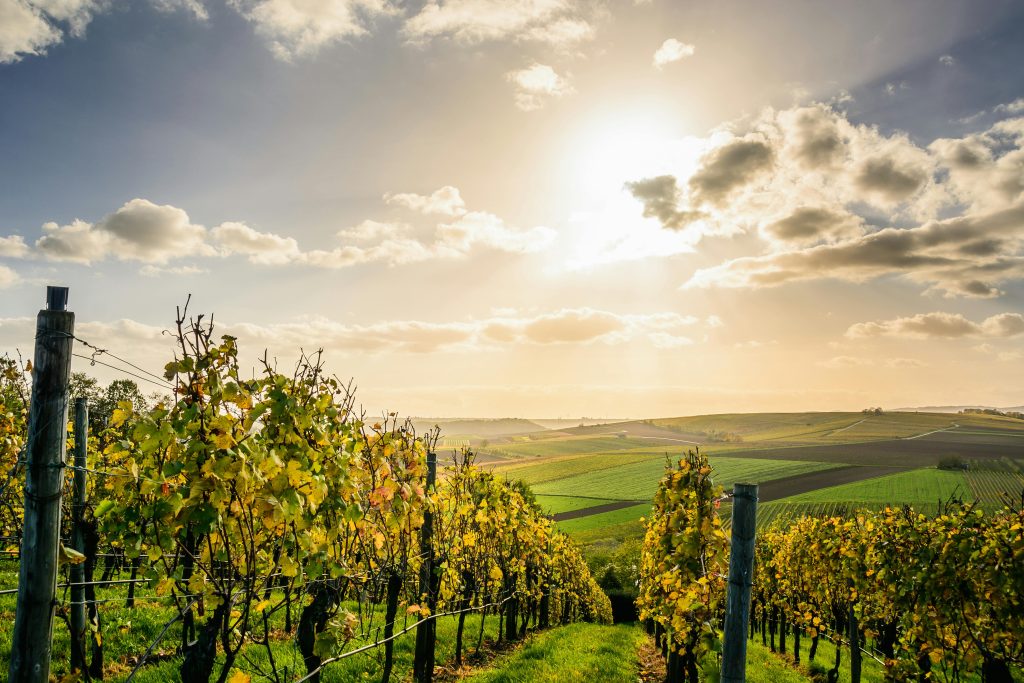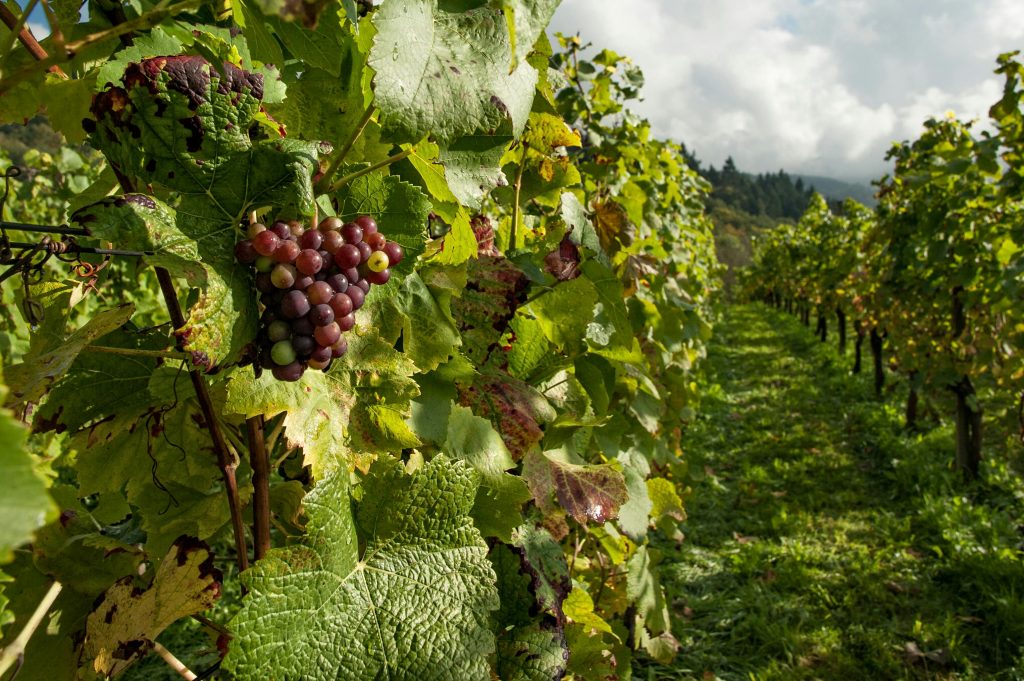
Imagine ending each day with a glass of your favorite wine. The rich aroma, the clink of the glass—it’s a simple pleasure many of us cherish. But have you ever wondered how much land is behind that single glass? Let’s uncork this mystery and pour out the facts…
A Sip Starts in the Soil
Every glass of wine begins in a vineyard. The journey from grape to glass is a tale of sun-soaked days, meticulous care, and the magic of fermentation. But how much space does it really take to produce enough wine for one glass a day?
The Daily Glass: Measuring Your Pour
First, let’s define our daily indulgence:
- One standard glass of wine is about 150 milliliters.
Over a year, that’s:
- 150 ml/day × 365 days = 54,750 milliliters, or 54.75 liters per year.
Now, let’s explore how much vineyard real estate is needed to produce those 54.75 liters.

The Yield of the Vine
Grape yields vary depending on grape variety, climate, and farming practices. However, we can use average figures to estimate.
- Average wine yield: A vineyard can produce about 6,000 liters of wine per hectare annually.
Breaking it down:
- 1 hectare = 10,000 square meters.
- 6,000 liters/hectare translates to 0.6 liters per square meter.
Calculating Your Personal Vineyard
Now, let’s figure out how much land you need for your yearly wine supply.
- Your annual consumption: 54.75 liters.
- Land needed: 54.75 liters ÷ 0.6 liters per square meter = 91.25 square meters.
So, to enjoy one glass of wine every day for a year, you’d need approximately 91 square meters of vineyard. That’s about the size of a small apartment or a spacious backyard garden!
Sharing the Joy: Wine for Two and Guests
But what if you’re not the only one loving that daily glass?
Wine for You and Your Spouse
- Double the consumption: 54.75 liters × 2 = 109.5 liters per year.
- Land needed: 109.5 liters ÷ 0.6 liters per square meter = 182.5 square meters.
Hosting Weekend Guests
Let’s say you have friends over on weekends, and together you enjoy a bottle.
- One bottle (750 ml) per weekend: 750 ml × 52 weeks = 39 liters per year.
- Total annual consumption including guests: 109.5 liters + 39 liters = 148.5 liters.
- Land needed: 148.5 liters ÷ 0.6 liters per square meter = 247.5 square meters.
So, to accommodate your own glass, your spouse’s, and weekend gatherings, you’d need approximately 250 square meters of vineyard. That’s like half a basketball court dedicated to your personal wine supply!
Visualizing the Expanded Vineyard
Picture a plot of land roughly 16 meters by 16 meters. In that expanded space, more rows of grapevines flourish, ensuring there’s enough wine to share with loved ones all year round.
From Vine to Wine: The Journey
Understanding the land is just part of the story. Let’s walk through the stages that transform grapes into that lovely liquid.
1. Cultivation
Your 250 square meters of vineyard require care:
- Pruning: Ensuring the vines grow properly.
- Irrigation: Providing water, though many vineyards rely on natural rainfall.
- Soil Management: Keeping the soil healthy with nutrients.
2. Harvesting
- Timeframe: Typically in late summer or early autumn.
- Method: Can be hand-picked or machine-harvested.
- Yield: Your plot would produce enough grapes to make 148.5 liters of wine.
3. Fermentation and Production
- Crushing and Pressing: Extracting juice from the grapes.
- Fermentation: Yeast converts sugars into alcohol.
- Aging: Wine matures in barrels or tanks, developing its flavor.
4. Bottling
- Packaging: Your annual supply fills about 198 bottles (assuming standard 750 ml bottles).
- Wine Storage: Proper conditions ensure the wine maintains its quality.

The Global Perspective
Now, let’s widen the lens. If everyone who enjoys a daily glass with their spouse and occasional guests needed their own 250 square meters, how much land would that be?
- Assuming 25 million households have similar consumption.
- Total land needed: 25 million × 250 square meters = 6,250 square kilometers.
That’s an area larger than the state of Delaware dedicated just to personal wine consumption!
The Sustainability Factor
Wine production isn’t just about land—it’s also about sustainable practices.
Water Usage
- Grapevines are relatively drought-tolerant but still require water.
- Efficient irrigation and dry farming methods reduce water use.
Chemical Use
- Organic and biodynamic farming avoid synthetic chemicals, promoting healthier ecosystems.
Carbon Footprint
- Local consumption reduces transportation emissions.
- Renewable energy in wineries lowers environmental impact.
Happy to Make a Choice
Your daily glass represents not just land but also choices about sustainability and environmental impact.
- Supporting Sustainable Wineries: Look for certifications or practices that emphasize eco-friendliness.
- Exploring Local Wines: Reduces transportation impact and supports local economies.
- Mindful Consumption: Enjoying wine responsibly enhances appreciation for the effort behind each bottle.
Fun Facts to Sip On
- Old Vines, Rich Wines: Older grapevines often produce less fruit but with more concentrated flavors.
- Terroir Matters: The unique combination of soil, climate, and terrain gives wine its distinctive character.
- A Global Affair: Wine grapes are grown on every continent except Antarctica.
Bringing It Home
So, next time you pour that glass, take a moment to appreciate the 250 square meters of vineyard that made it possible. Envision the vines basking in the sun, the careful hands that tended them, and the journey from earth to bottle.
The Investment Angle
If you’re a real estate enthusiast, consider this:
- Owning a Vineyard Plot: Investing in vineyard land can be both a passion project and a business opportunity.
- Wine Real Estate: Vineyard properties combine agricultural and residential real estate, often in beautiful locales.
Conclusion: A Toast to the Land
Wine is more than a beverage; it’s a connection to the land and a product of nature’s artistry. Understanding the space required to produce your daily glass—and that of your loved ones—adds depth to the experience.
Remember, every glass tells a story—one rooted in the soil and brought to life by those who cultivate it. Therefore, please share that story with family and friends! 😉